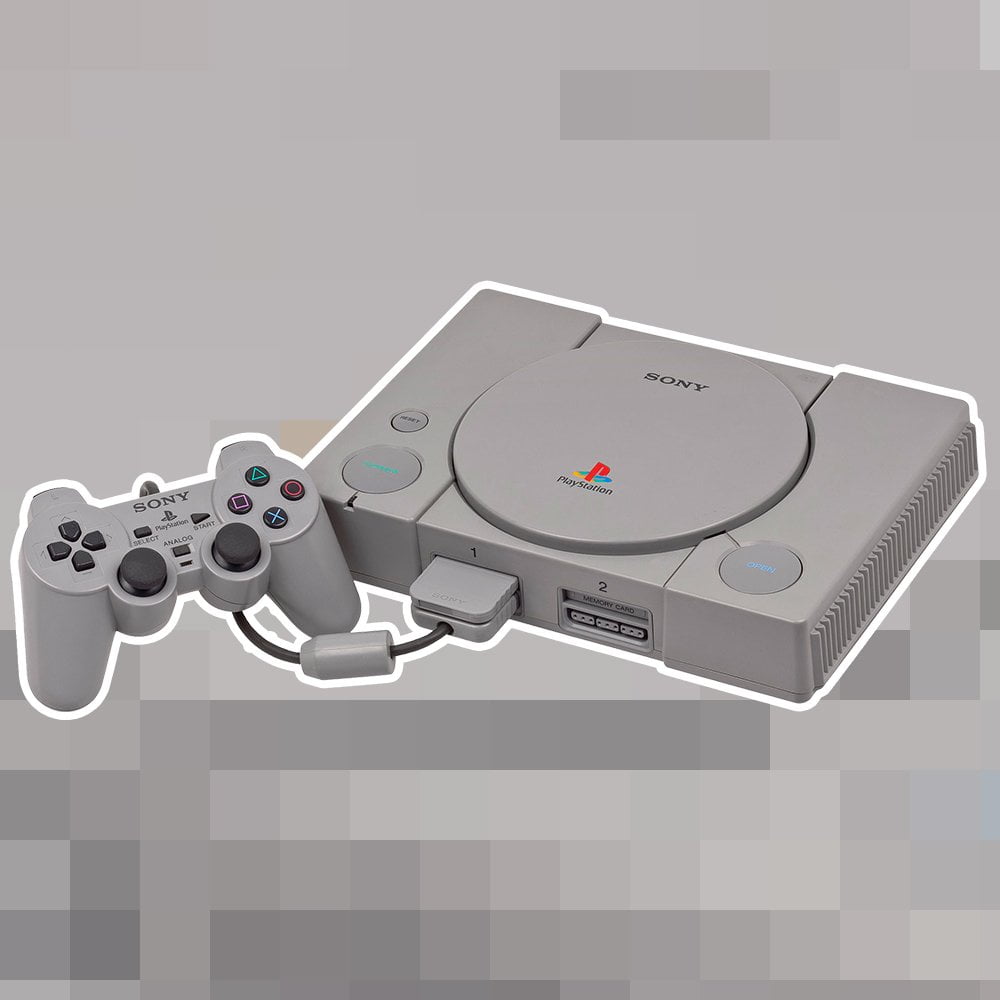Sony PlayStation
The Sony PlayStation (also commonly referred to as the PS and PS1), represents Sony Computer Entertainment’s debut in the home console market. The PlayStation disrupted the home console market and became the biggest-selling console of the fifth generation of game consoles.
PlayStation Related Articles
Launched originally in Japan in December 1994, The PlayStation was not released to the rest of the world until the following year in September 1995 and beyond.
The development of the PlayStation as a concept can be traced back to 1986. This is when a planned joint effort between Sony & Nintendo failed at the last moment. Nintendo wished to develop a CD-ROM add-on to their SNES console, akin to Sega’s Mega CD.
Sony was enlisted as their partner, and work on the ‘Play Station’ began. To cut a long story short, Nintendo cancelled the partnership and partnered with Philips at the last minute and ultimately, the project never came to fruition.
Rather shockingly too, this was announcement was made immediately prior to announcing the Sony partnership at the Consumer Electronics Show in 1991. Sony was furious at this betrayal and decided to move forward with the project alone and develop their own dedicated CD-ROM-based console.
Release week in Japan during December 1994 saw the PlayStation go up against the Sega Saturn. Strong performance in Japan was followed by the famous Electronic Entertainment Expo event in May 1995 in the US.
It was here that Sega announced the launch of the Saturn which would be sold at $399 USD. Sony quickly followed up with the shock announcement that the much-hyped PlayStation would launch at £299 USD!
This virtually destroyed Saturn’s chances from the word go, with the PlayStation clearly focussing more on 3D gaming whilst Saturn’s 3D abilities were limited from the beginning.

The competition also came from Nintendo in the form of the N64. The N64 still utilised cartridge-based technology, whilst the PlayStation was modern in terms of using CD-ROMs. Whilst load times were slower, this generally meant that games were cheaper to produce. Sony also was a leader during this generation of consoles in terms of offering third-party support.
They were proactive in sending development kits to a wide range of third-party developers. In addition to this, they offered a close working relationship with them too, by offering lines of support to third-party developers as well as offering regularly maintained programming libraries.
Sony quickly became very attractive to developers in their offering, and this showed by the number of games that were being produced on the PlayStation vs. their competitors.
The now-iconic PlayStation controller has links in terms of design with the SNES controller. Its surface buttons resembled the layout of the Super Nintendo controller the most but now included four shoulder buttons.
This allowed for more comprehensive control within 3D environments, for which the PlayStation was primarily designed. Sony evolved this design further by adding a more ergonomic ‘handle’ based design which certainly reduces cramps over longer gaming sessions! The original PlayStation controller core design remained in place over the PS1, PS2 & PS3 with the design being overhauled for the PS4.
Since the PlayStation had no onboard storage, memory cards became a staple feature for the PlayStation. This allowed users to save games across a number of ‘blocks’ on the memory card.
There were two PlayStation models released, the original design from 1994, and the smaller ‘PS One’ which launched in the year 2000.

A lifelong avid gamer and computing enthusiast, Matt has decades of Retro Gaming experience. Now over 40 years old, Matt now even considers himself retro, but fortunately, nobody has developed a Matt emulator (not yet at least!).






